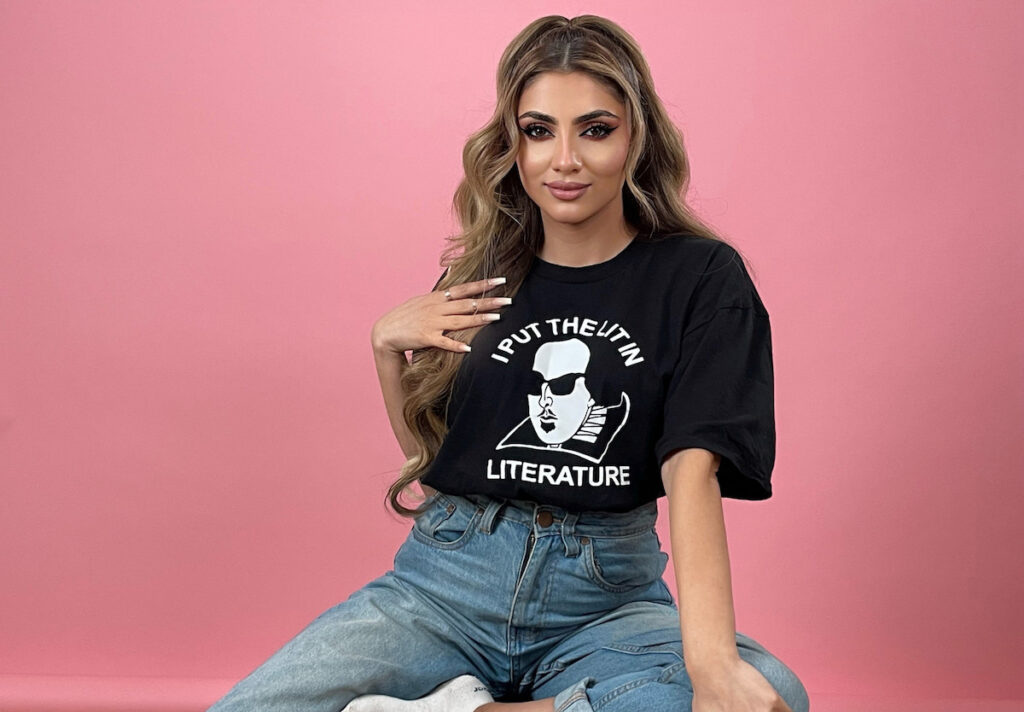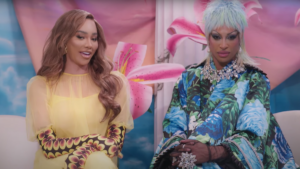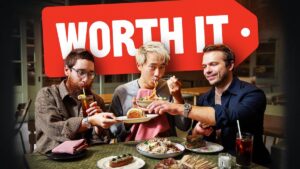
After more than 35 years of operation, TBI is closing its doors and our website will no longer be updated daily. Thank you for all of your support.
Exclusive: Taking the long view on factual shortform
Shortform factual content is growing fast, but how does it fit into the kaleidoscope of other programming out there? Andy Fry finds out.
There’s no lack of shortform factual storytelling in the world. With the emergence of social platforms like YouTube, Facebook, Snapchat and TikTok, the last two decades have seen an endless outpouring of user-generated content – covering everything from makeovers and interior design to adrenalin adventure and pets.
The journey for professionally-produced shortform factual content has not been quite so smooth, with Facebook Watch and Snapchat both struggling to land original commissioning models and Quibi proving a short-lived failure.
But these days there is a thriving shortform market that has worked out how to combine commercial and creative learnings from digital first and traditional content creators.
Thom Gulseven is a content producer who was, until Q1 2023, director of creative strategy at LADbible Group (LBG). During his tenure, LBG launched numerous shortform factual series including Minutes With, I Was There and Agree To Disagree.
“This is essentially an AVOD model,” explains Gulseven, “predicated on delivering high volumes of efficiently-produced content to the widest possible audience.”
It’s a highly iterative approach, says Gulseven, and is viable because of the sheer size of LBG’s audience – circa 1 billion at time of writing. At this scale, the company has even been able to create locally-targeted content. Earlier this year, for example, it dropped three new series in Australia – Hindsight, Chances and My Side. This followed the earlier success of Unheard, a series tackling racial injustice in Australia.
This digital first AVOD-led model has been pivotal to the emergence of a diverse and dynamic shortform factual market. Alongside LBG’s slate, for example, Buzzfeed has had hit series like Unsolved (true crime) and Worth It (lifestyle). Jungle Creations, meanwhile, has just launched Engaged, a female-focused short-form production. The series starts with the premise that the women’s toilet “isn’t just a place for a wee and topping up your mascara,” says Jungle Creations director of video, Charley Sutton. In each episode, two women with unique stories sit in adjacent toilet cubicles. With the wall between them, they cover topics such as dating, grief and body image.
While AVOD is the bread and butter of this model, Gulseven says the growth in the volume of shortform factual could lend itself to potential new revenue streams. “One area that hasn’t taken off yet in the digital first space is sponsorship. Another that could open up is ad-funded FAST channels built around original social first content.”
In parallel with the AVOD model is brand-funded content, which permeates everything from influencer TikToks to broadcaster-backed series. Speaking at the 2022 Digital Content Forum, Channel 4 senior digital commissioning editor Laura Marks highlighted exemplars such as a series about hidden homelessness, backed by The Body Shop (Unseen Kingdoms). More recently, Vinted came in as partner on a C4 YouTube show called Second Hand Style-Up while there are plans for a branded collaboration between C4’s digital first platform Channel 4.0 and cosmetics brand e.l.f.
Critical to understanding the shortform factual business model is realising that most projects plug into broader content ecosystems. Pinterest, for example, has built up its portfolio of professional quality shortform video through partnerships with publishers.
In March 2023, it unveiled a year-long alliance with leading US publisher Dotdash Meredith (DM) which will bring around 200 original videos to the platform. The partnership kicks off this month with Colorscapes, a video series from DM brand Better Homes & Gardens. Soon after comes a series from Brides called Wedding Dress 360. This follows a similar tie-up between Pinterest and Conde Nast at the end of last year.
Future Studios chief creative officer John Farrar, who previously worked at Raw TV and Talkback Thames, is one of the leading figures in digital first production. He describes his operation as a “flywheel” where the goal is to distribute IP in multiple forms. “Essentially, we’re doing three things. Firstly, we have an in-house team that makes shows for Facebook, Snapchat, and YouTube, then reversions them across platforms and monetises as AVOD.
“Secondly, there is our owned and operated model where we provide shortform video for brands in our portfolio, which covers everything from Marie Claire to Minecraft World. That is also an advertising model. Finally, there is our TV department – where we are looking to both long and shortform commissions.”
For Farrar, the goal is to “make something once, then monetise it in multiple ways. A good example would be our work with Marie Claire. There was an article in a US magazine that inspired us to internally commission On The Record, a premium, shortform true crime series. We’re monetising that across various media channels but we’ve also sold both the scripted and non-scripted rights to the idea.”
It’s a similar mindset with Future’s new educationally-focused series Glow Up Your Grades, recently launched on YouTube. “At one level, this is a factual series about helping kids through their GCSEs. But there’s a much bigger agenda here about how we can lean on our in-house resources to build an educational business.”
In terms of ‘bonus’ revenue streams, Farrar says shortform episodes can be woven together for TV distribution. Future, for example, licences content via TVF International. Karen Young, CEO of distributor Orange Smarty, says she is exploring shortform content “as a way of increasing revenue streams via AVOD. Platforms such as You Tube and Facebook allow for a more targeted demographic approach. In addition, rights flexibility allows us to explore multiple platform penetration.”
Sub-10 minute titles in her catalogue include Face The Consequences, How Not To Die, Students On The Edge, Visible Farmer and Skin Deep, a series of cinematic shorts focusing on six people with extreme skin issues. Going forward, says Young, “we want to explore cuts from full length programmes that can shorter narratives.”
Young’s point is a reminder that, sitting alongside all of the above, is a parallel model, where content creators spin off ancillary content from existing longform programming.
To cite one example among many, A+E Networks’ History Channel US recently teamed up with genealogy brand Ancestry to create a shortform series to complement a TV franchise called History’s Greatest Of All Time With Peyton Manning. Elsewhere, BBC Studios (BBCS) recently unveiled a content partnership with Snapchat. Included in the deal are highlights and behind the scenes videos from Top Gear and BBC Earth.
Historically, such content would have been used to direct audiences towards TV. But increasingly it is used to meet young audiences where they are and to generate new revenues. To underline the latter point, BBCS has just launched an in-house ad sales function to drive revenue across social platforms. Gary Webber, BBCS group head of digital advertising, says the new sales operation “will enhance existing revenue streams” by giving advertisers access to a global reach of around 4.7 billion views. To date, BBCS has commissioned around 50 hours of original social formats. As the ad model matures, it should sustain more shortform originations.
At this juncture, it is worth noting that shortform factual doesn’t necessarily have to deliver immediate ROI. Europe’s public broadcasters, not bound by commercial imperatives, look to shortform to achieve pro-social objectives – often related to youth or education programming.
Similarly, Derren Lawford, founder and CEO of Dare Pictures, says “shortform can be a valuable entry point for new, diverse voices. It also has value if you’re looking to build partnerships with talent. There’s also a healthy relationship between shortform and festivals, which speaks more to reputation.”
Lawford’s eye is primarily on the broadcast and streamer market: “But if I felt an idea was right for the digital first market, I’d probably work with one of the sector’s specialists like After Party. There is an argument that the content industry would benefit from more creative co-productions between digital and traditional producers.”
Shortform can also be a great way of vocalising what a brand stands for. Paramount-owned MTV has just unveiled a new four-part digital series called MTV Faces, which explores grief through the eyes of celebrity guests. This follows previous digital series such as Queerpiphany and Drunk History: Black Stories. Cat Collins, VP, international, digital & social, MTV Entertainment Studios, says: “If Faces generates revenue or leads people back to other channels, that’s great. But for us the real consideration is how we are perceived by younger audiences and talent. If someone watches MTV Faces and feels like they needed to hear that conversation, we’ve done our job.”





